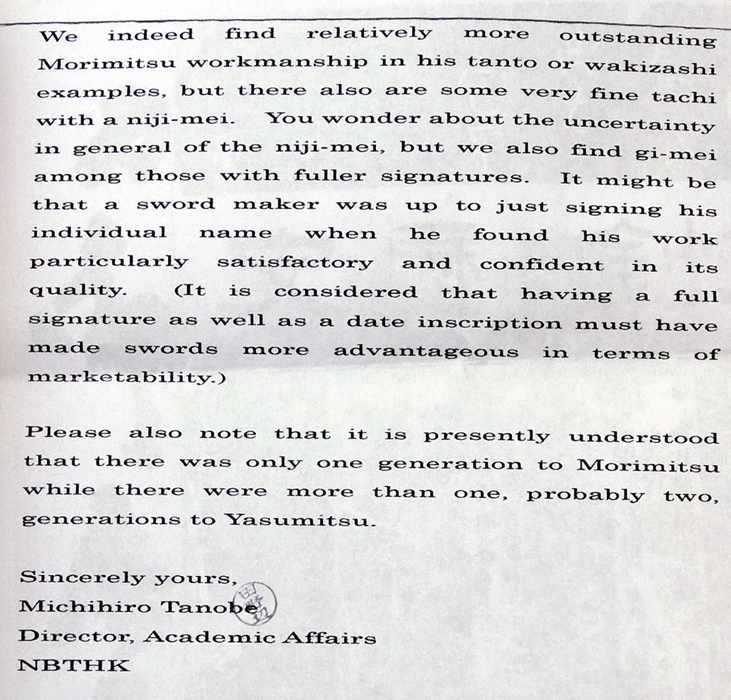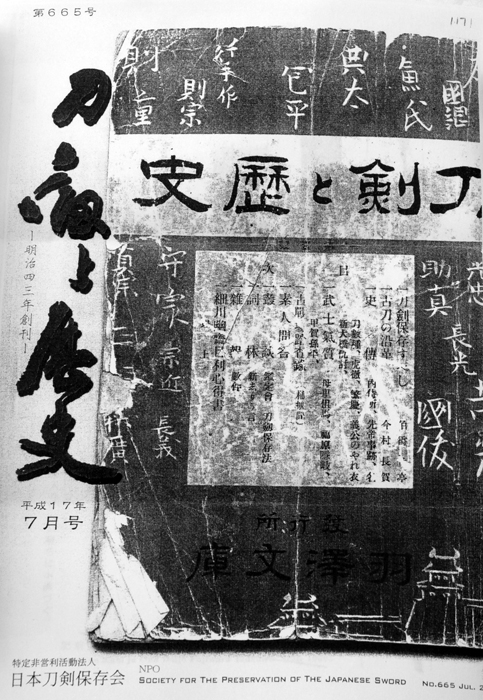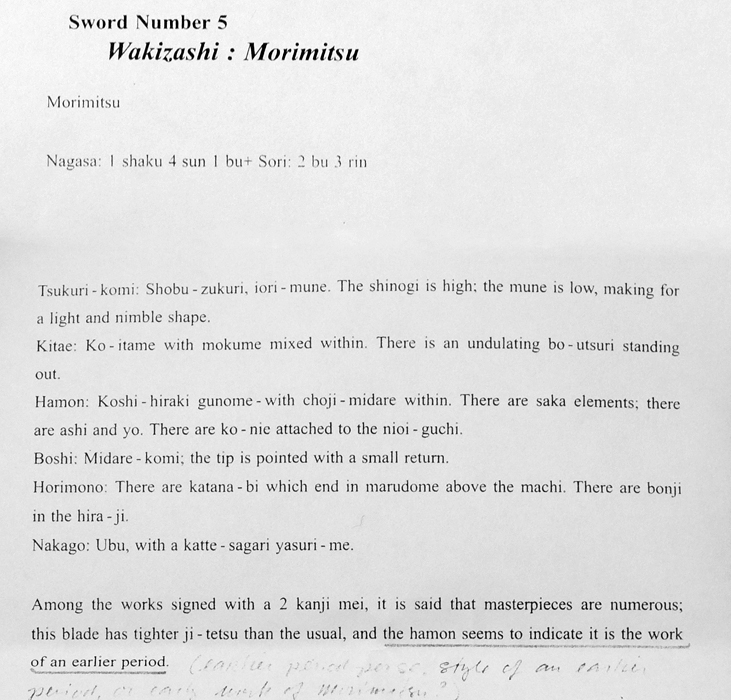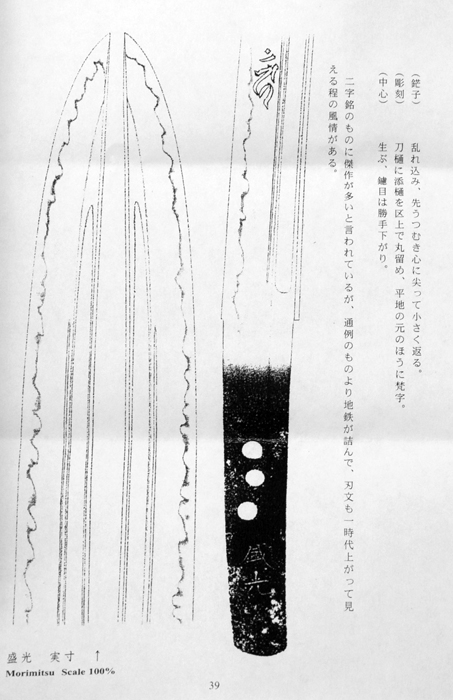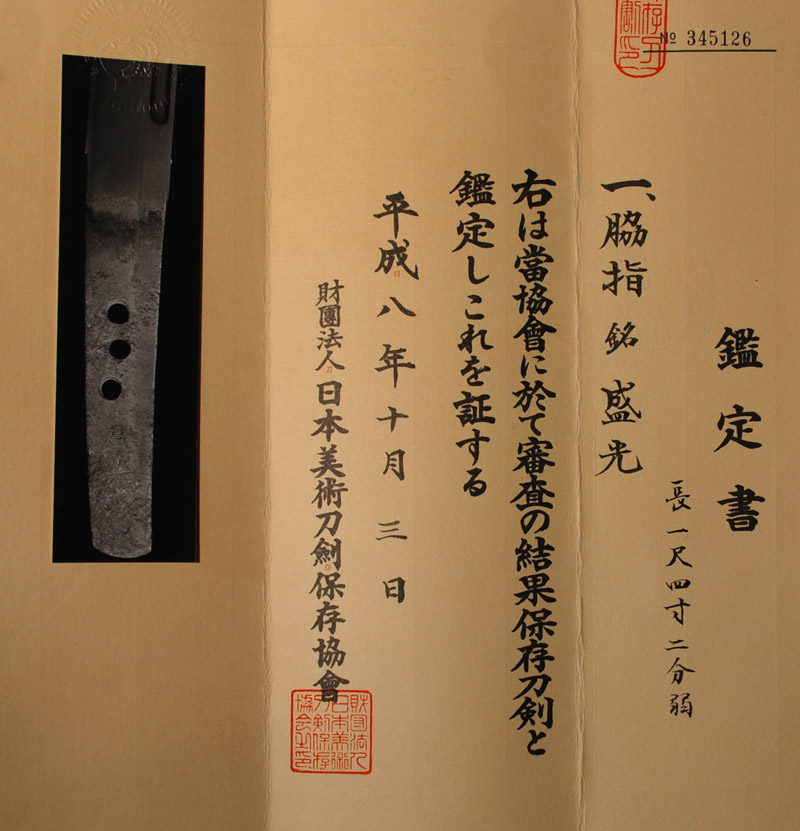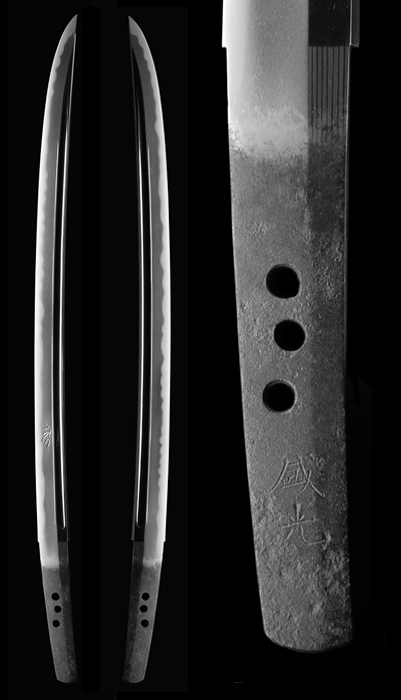|
| |||||||||||||||||||||||||||||||||||||||||||||
Hamon : Nioi deki gunome midare with some ko-nie mixed in. The nioi guchi is tight and bright. Most of the gunome are rounded with occasional togari mixed in. Some of the gunome have a slanted feeling and there are ashi throughout. Overall, the hamon has a lively organic feeling.
Boshi : The omote is jizo in style and ura is ichimai with no return.
Kitae : Tight ko-itame mixed with hint of masame and having a nagare "flowing" feeling. The hada pattern is admirably clear and there is chikei and ji nie throughout. Clear bo utsuri can be seen on both sides. The utsuri touches the hamon in several places.
About this sword : This is a fine wakizashi by the famous Bizen Osafune smith, Morimitsu. This smith was active around Oei (1394 -1428). Morimitsu along with Yasumitsu and Moromitsu were the representative smiths of mainline Bizen at that time. They are known collectively as the "Oei San Mitsu". As a smith holding a key position in the history of Bizen den, the empirical value of this blade is quite high. The aforementioned is especially true considering the textbook style of this work. The distinctive bo-utsuri seen here is an important kantei point and the fact that the bo utsuri touches the heads of the gunome in several places is an unique feature of Oei Morimitsu (Tokotaikan p.665). The tendency toward more rounded gunome than togari, seen in this blade, is a feature that separates Morimitsu from Yasumitsu. The jigane pattern being a tightly forged itame with a small amount of masame mixed in and having a flowing or "nagare" feeling is typical of Oei Bizen. This blade is an early example of the shobu-zukuri shape. The shobu-zukuri sugata became very popular in sue koto but its origin is much earlier. For example, there is a signed and dated shobu zukuri wakizashi by Bizen Iyemori dated Meitoku 4th year, June, (1393) on page 15 of the Koto Taikan. This Morimitsu has a gentle saki sori. This is notably different than the strong saki sori and thick cross section seen in sue koto shobu zukuri blades. There is a kite-ware on the bo-hi on the omote. This not distracting or at all unusual for an old blade. The overall health of the blade is high. There are no areas of shintetsu and the jiba is flawless.
This sword was published by the NTHK in issue #665 of Token to Rekishi (pg 38-42). Please see the photos below of the publication. In the write-up it is pointed out that many masterpieces are found among Morimitsu's niji mei work. It also points out that this sword has a tighter jitetsu than usual and that this hamon is indicative of early period work. Also, please see the note from Tanobe Michihiro about this blade to a previous owner shown below.
A Japanese made shirasaya and high quality double gold foil habaki accompany the blade as well as an NBTHK Hozon Paper. The silk string attaching the tag is called a "sageito". It was made by Mrs. Suzuki, a celebrated traditional craft-person in Tokyo. The sageito is non-synthetic, made to order entirely by hand and colored with natural dye. The wooden tag, called a "kifuda", was made form an old shirasaya by Mr. Shimizu in Kyoto. It should also be mentioned that quality of this polish is very high as one would expect to see on a blade so obviously adored. As with the rest of the restoration, the polish was done in Japan. This is a wonderful Oei Morimitsu that we are delighted to recommend.










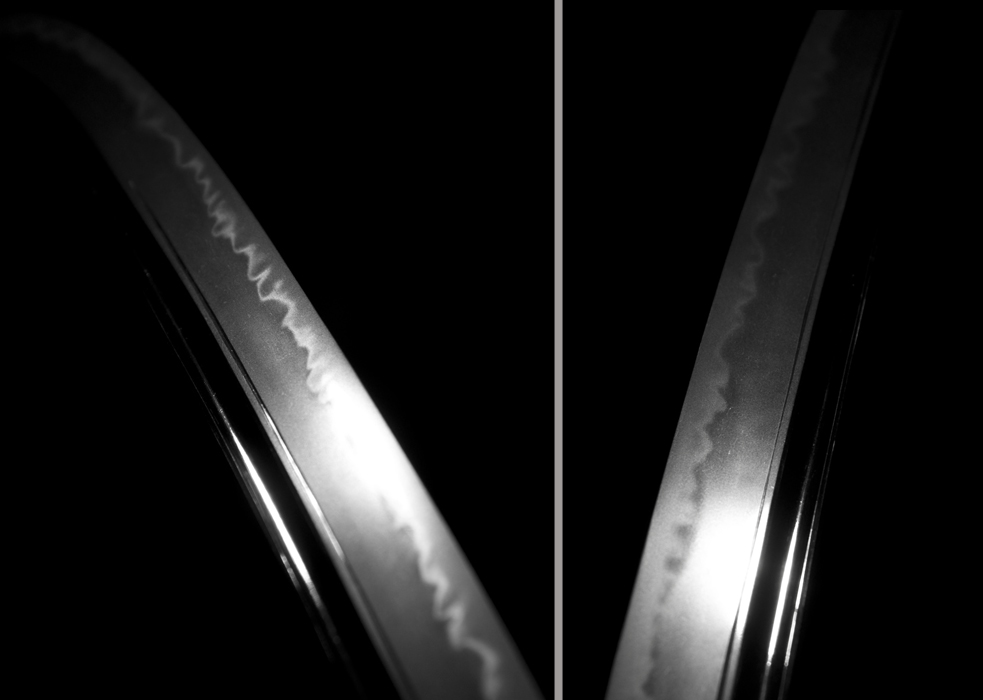
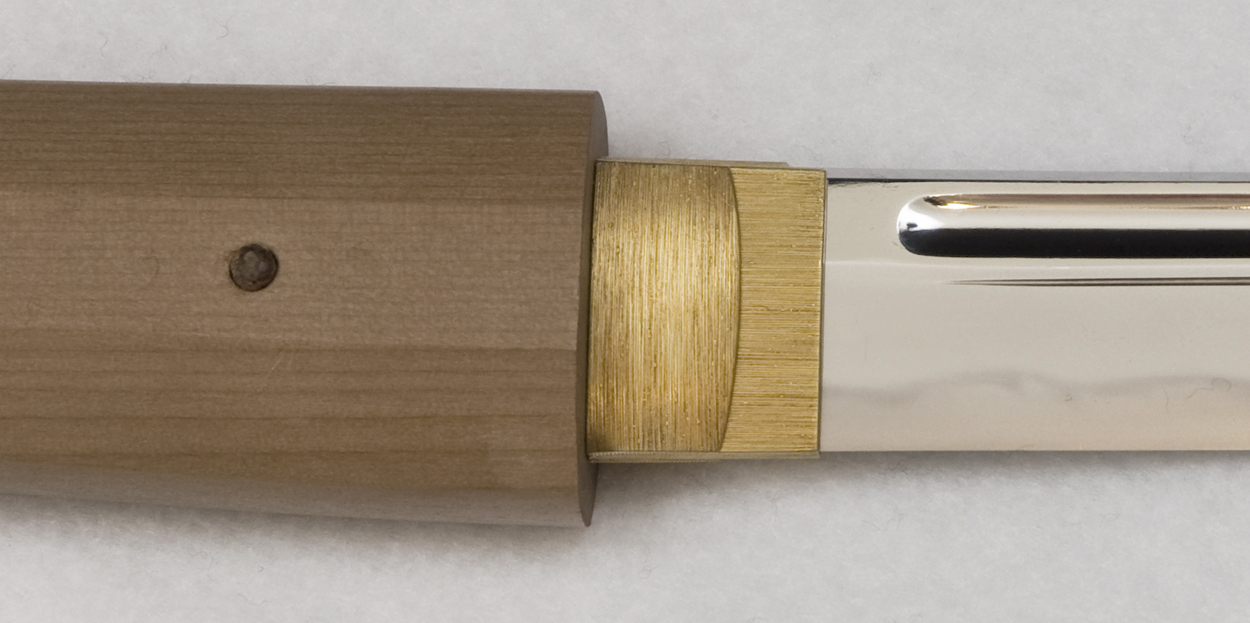

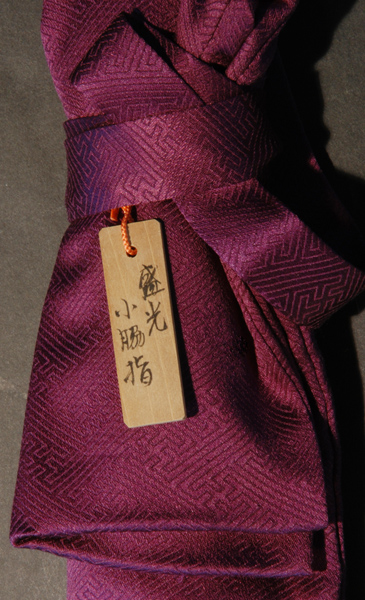
|
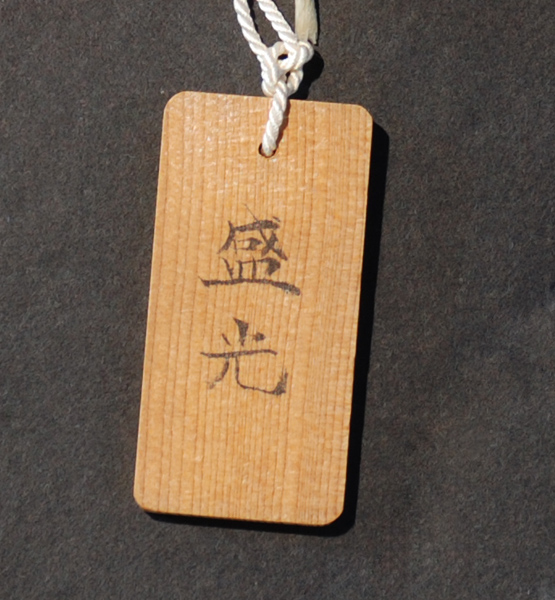
|
